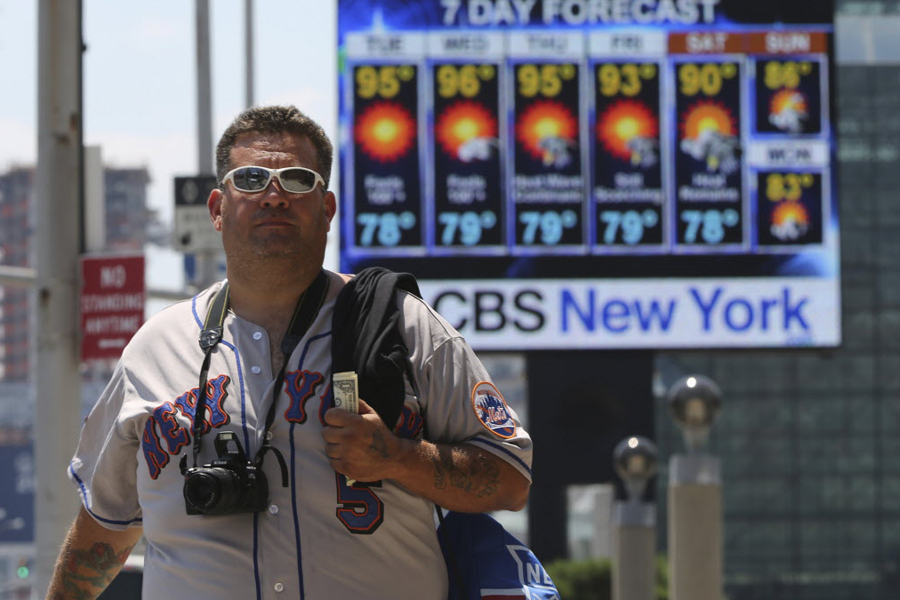Heat wave: Northeast faces a few more scorchers. Then, relief!
Loading...
Blistering heat across most of the eastern United States is expected to last until the weekend, even as some states post record low temperatures.
New York, Philadelphia, and Washington, D.C., are all expecting their hottest temperatures of the year so far, with temperatures hitting the upper 90s and low 100s, and temperatures are soaring in the Plains and Great Lake states.
Chicago recorded its hottest day of the year so far at 92 degrees on Tuesday, and cooling centers are open to the public in Wisconsin, Michigan, Ohio, and Indiana.
"In this case, it's the longevity of the heat wave that poses the biggest concern, rather than the magnitude of the temperatures, themselves," said Weather.com senior meteorologist Jon Erdman.
"Cooler air should arrive in the Upper Midwest beginning Friday. By this weekend, the Northeast will receive the cooler air with open arms. All this will come at the cost of severe thunderstorms, however," Mr. Erdman said.
More than 400 cooling centers are open in New York, which is experiencing the highest above-normal temperatures in the country.
"It's going to be very hot and humid this week. The weather can be dangerous, especially for those without air conditioning, the elderly, and those with chronic health conditions," Mayor Michael Bloomberg said.
In the Washington, D.C., metro area, where temperatures are expected to reach high 90s with heat indexes topping 100, emergency repairs on a major water main could leave more than 100,000 Maryland residents without water for as many as five days, according to the Washington Post.
Even while much of the country stockpiles water and seeks air conditioning, some other states have posted surprisingly low temperatures.
On Monday, Texas and Oklahoma recorded their all-time lowest temperatures for July 15. Parts of Alaska were warmer than Texas that day: Alaska’s eastern interior was in the low 80s, while Abeline, Texas, clocked in at a refreshing 68 degrees.
The cooler temperatures in Texas are due to clouds and rain, but there are flood concerns in western Texas and into New Mexico, according to the National Weather Service.
The West Coast experienced its own extremes in June, when a heat wave broiled residents in states from Arizona to Idaho and Washington and the temperature at Death Valley National Park tied the record for the hottest June day anywhere in the country at a stifling 128 degrees.
The hottest summer recorded in US history occurred during the Dust Bowl in 1936 with an average temperature of 73.83 degrees for the season. The past two summers came tortuously close to breaking the record: The summers of 2011 and 2012 tied for the second-hottest summer with an average temperature for the season only one-tenth of a degree cooler than the record.
Material from the Associated Press contributed to this report.








